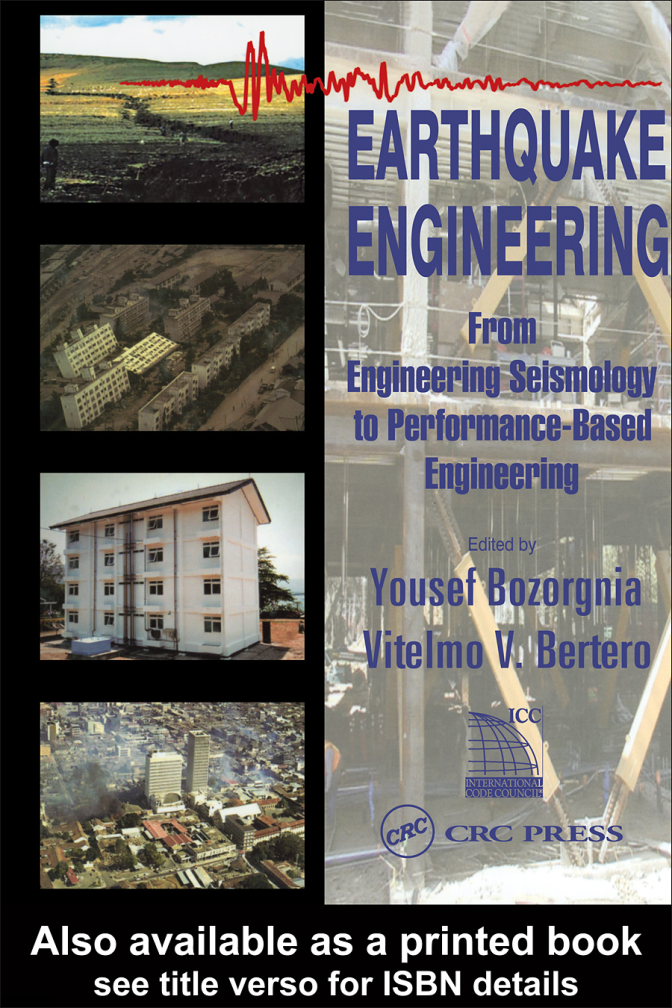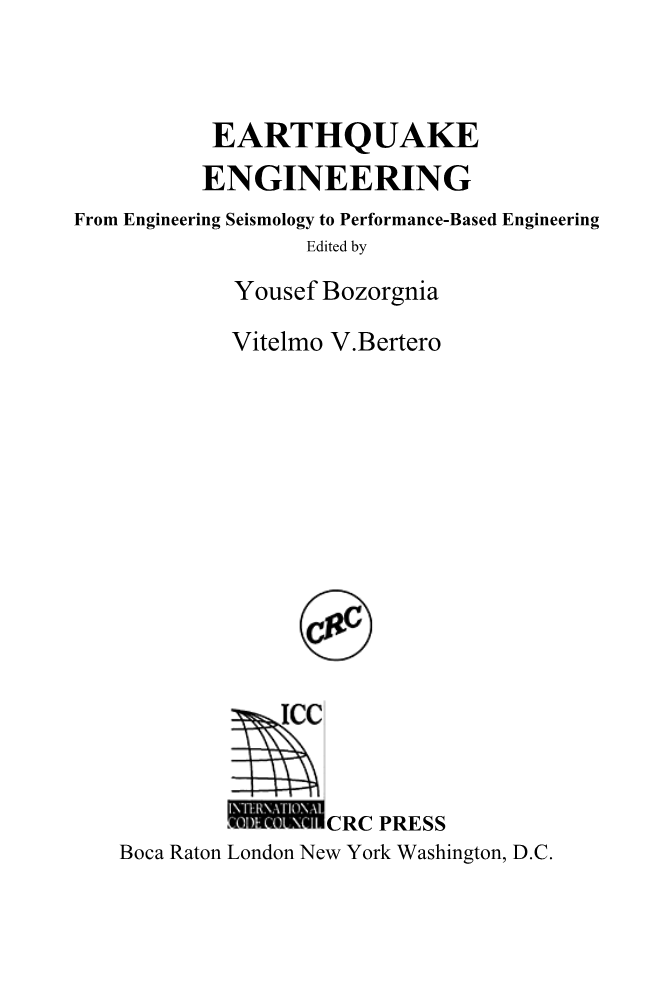

英语原文共 1268 页,剩余内容已隐藏,支付完成后下载完整资料
B.1 英文原文
The Role of Geology in Seismic Hazard Mitigation
3.1Introduction
The contribution of geology to seismic hazard mitigation is that the past is the key to the future. Where an earthquake has occurred in the past, it is likely to occur again. The primary role of the geologist is to locate paleo-earthquakes using paleoseismology, locate and characterize the faults that generate them and develop a quantitative understanding of the style, magnitude, frequency and recency of earthquakes on those faults as a guide to their future behavior. Geology, therefore, is both locative and predictive. It can be used to forecast the size of the earthquake, the location of the fault rupture, the surface deformation anticipated where the fault does not reach the surface, and the local site amplification factors that will impact strong ground shaking and soil failures. Geology provides the quantitative foundation on which other aspects of seismic hazard mitigation are based.
Early studies of earthquake hazards were conducted following major earthquakes in Marlborough, New Zealand, in 1888; Mino-Owari, Japan, in 1891; Assam, India, in 1897 and San Francisco, California, in 1906. In all of these investigations, geologists played leading roles. The careful fault-rupture descriptions of Alexander McKay of New Zealand, Bunjiro Koto of Japan and G.K.Gilbert of the United States set a standard that has rarely been exceeded (see personal vignettes in Yeats et al., 1997). All of these studies focused on the surface effects of the earthquake, including crustal deformation. Aside from Gilbert, though, these researchers did not consider the implications in future planning and engineering design.
In subsequent decades, geologists continued to play a role, albeit a subordinate one due to two developments. One was the Wood-Anderson seismograph, designed in the 1920s, which resulted in an increasingly important role played by geophysicists. Another was the adoption in California of the first local building codes taking earthquake resistance into consideration, starting after the 1925 Santa Barbara earthquake and accelerating after the Long Beach earthquake of 1933. The public outcry after the Long Beach earthquake led to the adoption of the Field and Riley Acts by the State of California, resulting in an increasingly important role for structural engineers. For the half century that followed the 1906 San Francisco earthquake, geologists working on earthquake-related problems were almost entirely university professors or employees of the U.S. Geological Survey (see historical summaries by Geschwind [2001] and Yeats [2001]).
The development of building codes regulating the quality of building construction was not accompanied by ordinances dealing with the safety of building sites until 1952, when the City of Los Angeles adopted the first grading ordinance in the United States and set up a grading section within the Department of Building and Safety. This move was triggered not by earthquakes but by landslides, which were an increasing problem as the expanding population of Los Angeles moved into the surrounding foothills. By 1963, development projects were required to be supported by both geotechnical engineering and engineering geology reports, and grading operations had to be supervised by both a soils engineer and an engineering geologist. This led to the establishment of geological consulting firms and to the employment of geologists in larger consulting engineering firms. For example, F.Beach Leighton, a professor of geology at Whittier College, established a geological consulting practice in a spare room of his home, then expanded to a large organization with offices throughout southern California.
California now requires geological consultation mainly due to two acts of the legislature: the Alquist-Priolo Earthquake Fault Zoning Act, first adopted in 1972 to regulate construction on or near active faults and the Seismic Hazard Mapping Act of 1990, dealing with land subject to liquefaction and earthquake-induced landsliding. The state agency given principal responsibility for these laws is the California Geological Survey (formerly the Division of Mines and Geology), which, in addition, assists local governments in adopting Seismic Safety Elements as part of their General Plans, based on a law passed in 1971.
California has the most advanced earthquake-protective legislation in the United States, perhaps in the world (Yeats, 2001), but other states have not followed its lead in evaluating the safety of building sites. Oregon, for example, has upgraded its building codes close to California standards, but its land-use laws protecting against geologic hazards are essentially unchanged. As a result, building sites in Oregon, like those in other states in harmrsquo;s way from earthquakes, fall victim to what has become known as Slossonrsquo;s Law, advanced by geological consultant and former California State Geologist James Slosson: The quality of professional work will sink to the lowest level that government will accept.
This chapter presents examples from consulting practice in which geology was important, even critical, to seismic hazard mitigation. Most examples are from California, where geological studies are required, but the chapter is written with the objective that a state-of-the-art analysis anywhere in the world will include geological factors, whether or not it is required by state or local law.
For more details about the geological background, refer to McCalpin (1996) and Yeats et al. (1997).
3.2Paleoseismology
Clients want to know when the next earthquake is likely to strike near the project site, and how much damage the earthquake will do. Short-term prediction is not yet on the horizon and may never be in our lifetimes. So we must rely on probabilistic forecasts that
剩余内容已隐藏,支付完成后下载完整资料
资料编号:[589346],资料为PDF文档或Word文档,PDF文档可免费转换为Word
课题毕业论文、开题报告、任务书、外文翻译、程序设计、图纸设计等资料可联系客服协助查找。
您可能感兴趣的文章
- 饮用水微生物群:一个全面的时空研究,以监测巴黎供水系统的水质外文翻译资料
- 步进电机控制和摩擦模型对复杂机械系统精确定位的影响外文翻译资料
- 具有温湿度控制的开式阴极PEM燃料电池性能的提升外文翻译资料
- 警报定时系统对驾驶员行为的影响:调查驾驶员信任的差异以及根据警报定时对警报的响应外文翻译资料
- 门禁系统的零知识认证解决方案外文翻译资料
- 车辆废气及室外环境中悬浮微粒中有机磷的含量—-个案研究外文翻译资料
- ZigBee协议对城市风力涡轮机的无线监控: 支持应用软件和传感器模块外文翻译资料
- ZigBee系统在医疗保健中提供位置信息和传感器数据传输的方案外文翻译资料
- 基于PLC的模糊控制器在污水处理系统中的应用外文翻译资料
- 光伏并联最大功率点跟踪系统独立应用程序外文翻译资料



